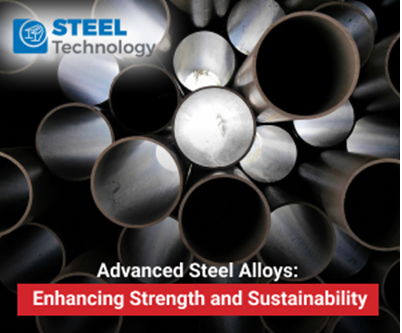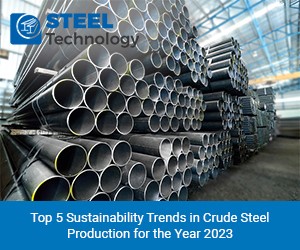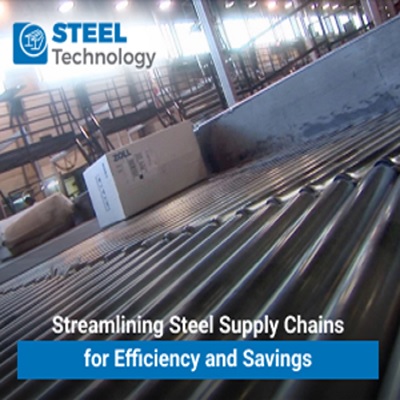Advanced Steel Alloys: Enhancing Strength and Sustainability

Introduction
Steel has been a fundamental material in human civilization for centuries, but it has come a long way from its early forms. Today, advanced steel alloys are revolutionizing industries, enhancing strength, and promoting sustainability. In this article, we will delve into the world of advanced steel alloys, exploring how they are developed, their remarkable properties, and their role in creating a more sustainable future.
Understanding Steel Alloys
Let's take a moment to grasp the concept of steel alloys before delving into the realm of advanced variations. Essentially, steel is fundamentally composed of iron and carbon, with minor traces of other elements. Alloys are crafted by blending two or more elements to create a substance with enhanced features. When it comes to steel, alloying elements are introduced to alter its attributes, such as strength, longevity, resistance to corrosion, and various other qualities.
The Development of Advanced Steel Alloys
The development of advanced steel alloys is a highly specialized field of materials science and metallurgy. Scientists and engineers work tirelessly to design and fine-tune these alloys to meet specific industrial and consumer needs. The process typically involves adjusting the composition of steel by adding various alloying elements like chromium, nickel, manganese, molybdenum, and vanadium. Each of these elements imparts unique properties to the resulting steel.
A) Properties of Advanced Steel Alloys
Enhanced Strength: One of the primary goals of developing advanced steel alloys is to improve their strength. By carefully selecting alloying elements and optimizing their proportions, engineers can create steel that can withstand extreme forces, making it ideal for applications in construction, transportation, and manufacturing.
Resisting Corrosion: Numerous advanced steel alloys are specifically engineered to possess impressive resistance against corrosion, a prevalent concern across various industries. For instance, stainless steel incorporates chromium, which fosters the creation of a protective oxide layer on the surface, effectively shielding it from rust and corrosion.
High-Temperature Resistance: Some advanced steel alloys can maintain their structural integrity at high temperatures. This property is essential in applications like aerospace, where materials must withstand extreme heat during re-entry.
Durability: Advanced steel alloys are known for their exceptional durability, making them suitable for long-lasting structures and machinery. This durability contributes to the sustainability of steel, as it reduces the need for frequent replacement.
Lightweight: Steel alloys can also be engineered to be lightweight while retaining their strength. Lightweight steel is valuable in the automotive and aerospace industries, where reducing weight can improve fuel efficiency and reduce emissions.
Recyclability: Steel is inherently recyclable, and advanced steel alloys maintain this property. The recyclability of steel contributes to its sustainability by reducing the demand for new raw materials and energy-intensive production processes.
B) Applications of Advanced Steel Alloys
Automotive Industry: Advanced steel alloys play a vital role in making vehicles safer and more fuel-efficient. High-strength steel is used to reinforce the vehicle's structure, improving crash safety, while lightweight steel helps reduce overall weight, enhancing fuel economy.
Construction: Within the construction industry, steel alloys find extensive use in vital structural components like beams, columns, and reinforcement bars. These alloys supply the requisite strength and resilience necessary for the construction of secure and enduring structures.
Aerospace: The aerospace industry relies on advanced steel alloys for components that must endure extreme conditions, from the high temperatures of rocket engines to the rigors of space travel.
Energy Sector: Steel alloys are used in various parts of the energy sector, including the construction of wind turbines, oil and gas pipelines, and nuclear power plants, where their strength and resistance to corrosion are crucial.
Medical Devices: Stainless steel is widely used in the medical industry for its biocompatibility and resistance to corrosion. It's used in surgical instruments, implants, and medical equipment.
C) Sustainability Benefits of Advanced Steel Alloys
Resource Efficiency: The development of advanced steel alloys allows manufacturers to produce stronger and more durable products using less material. This reduces the overall demand for raw materials, conserving resources.
Extended Lifespan: Advanced steel alloys contribute to the longevity of structures and machinery, reducing the need for replacements. This not only saves money but also reduces the environmental impact of manufacturing and disposal.
Recyclability: Steel is one of the most recycled materials globally, with advanced steel alloys being no exception. Recycling steel conserves energy and reduces carbon emissions compared to producing steel from raw materials.
Lightweighting: Lightweight steel alloys contribute to improved fuel efficiency in vehicles, reducing greenhouse gas emissions. In the transportation sector, every kilogram of weight saved translates into lower fuel consumption and emissions over the lifetime of a vehicle.
Corrosion Resistance: Corrosion-resistant steel alloys extend the lifespan of structures and equipment in harsh environments, reducing the frequency of replacements and repairs.
D) Challenges and Future Directions
While advanced steel alloys offer numerous advantages, there are challenges to address:
Energy-Intensive Production: The production of steel, especially high-performance alloys, can be energy-intensive. Research into more energy-efficient production methods is ongoing.
Cost: Some advanced steel alloys can be expensive to produce due to the alloying elements used. Finding ways to make these materials more cost-effective is a priority.
Recycling Infrastructure: To fully realize the sustainability benefits of steel, we need robust recycling infrastructure and increased awareness of the importance of recycling.
In the future, research will focus on developing new alloys with even better properties, as well as refining existing ones for broader applications. Additionally, innovations in manufacturing processes will continue to reduce energy consumption and environmental impact.
E) Advanced Steel Alloys and Sustainable Design
In addition to their intrinsic properties, advanced steel alloys are a cornerstone of sustainable design principles. Here's how they contribute to a more sustainable future:
Green Buildings: Steel alloys are integral in constructing green and sustainable buildings. High-strength steel allows for the design of slender structures with larger windows, maximizing natural light and reducing the need for artificial lighting. This, in turn, reduces energy consumption and enhances occupant comfort.
Renewable Energy: The renewable energy sector heavily relies on steel alloys. Wind turbines and solar panel mounting structures are often made from advanced steel alloys due to their high strength and durability. This facilitates the transition to clean energy sources.
Transportation Efficiency: Lightweight steel alloys significantly impact the automotive industry's sustainability efforts. As electric vehicles become more prevalent, advanced steel alloys help extend battery life by reducing vehicle weight, thus promoting energy efficiency and reducing carbon emissions.
Advancing Sustainable Infrastructure: The development of sustainable infrastructure projects, including bridges and railways, gains substantial advantages from the durability and corrosion resistance of advanced steel alloys. This results in decreased expenses for maintenance and repairs minimized disturbances to communities, and a diminished environmental impact.
Reduced Waste: The longevity of advanced steel alloy products, combined with their recyclability, contributes to waste reduction. When these products reach the end of their life cycle, they can be easily recycled and used to create new materials, conserving resources.
Carbon Emissions Reduction: The steel industry is making strides in reducing its carbon footprint through innovative processes like electric arc furnaces and hydrogen-based steel production. These advancements further enhance the sustainability of steel alloys.
| Also Read: Steel Coatings and Finishes: Meeting Industry-Specific Requirements |
Conclusion
In summary, advanced steel alloys stand as a pinnacle of contemporary engineering and technology, offering unparalleled strength, longevity, and eco-friendliness. These materials hold a pivotal position across diverse sectors, including automotive, aerospace, construction, and energy. As our quest for greener and more efficient solutions persists, it is evident that advanced steel alloys will play a substantial role in molding a future characterized by both environmental sustainability and robust resilience.











